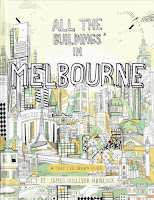| photo taken the first week of our BC visit |
Our first few days were spent in Victoria's James Bay neighbourhood, a heritage district just a short walk from the breath-taking inner harbour. These homes are built on land once named Beckley Farm, which in the 1840s served as the 'home farm' which fed the Hudson's Bay Company fort. (The fort's footprint is still visible in the historic downtown, outlined by decorative tile.) Adding another layer, one of the early landowners in this neighbourhood, once the Company divested itself of the farmland, was a Mr. Carr, father of the beloved Emily. In fact, Government Street was once called Carr Street. I'm looking forward to sharing a few of these stories (with matching houses) with you.
Our goal during our miles of walkabouts was to absorb Victoria's natural world, and the built one, thanks to some good planning, and the welcome suggestions of our bed and breakfast hosts, David and Toshie. They were in a good position to make recommendations, as they live in part of the area's history.
David has written a meticulously researched local history about the James Bay neighbourhood, which I am just beginning to enjoy. It's called Victoria's Past: The View from Marifield House. The book is available online, and I recommend it highly.
 |
| photo taken on our return to Marifield House 2 weeks later |
There are so many B.C. house stories waiting to be told.
But first, some other deadlines to honour. No pressure.
Now this is pressure (of the very best sort.) Friends Larry and Bill, enthusiastically returning from a month in Australia, yesterday presented me with two volumes of architectural drawings of favourites from their visits to Sydney and Melbourne, in anticipation of our own travels there, all being well, next winter. Hope I'm caught up by then.











